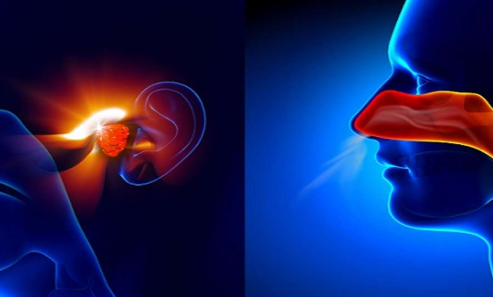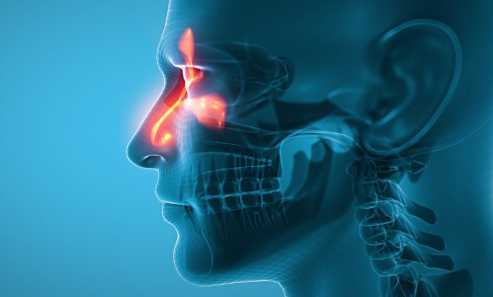




The CritiCare Asia Department of ENT is a leading provider of ear, nose, and throat (ENT) care in Mumbai. The department is staffed by the best ENT surgeons near me that are highly qualified and experienced ENT specialist doctors who are experts in the diagnosis and care of a huge range of ENT conditions. The department provides a wide range of facilities, including ear infection treatment, ear surgeries, sinus surgeries, tonsillectomy and adenoidectomy, voice surgery, sleep apnea surgery, and other ENT surgeries.
The department also offers a variety of diagnostic services, including hearing tests, balance tests, nasal endoscopy, sinus endoscopy, throat examination, and voice assessment.
The CritiCare Asia Department of ENT is committed to providing its patients with the premium quality care in a comfortable and supportive environment. The department is accredited by the National Accreditation Board for Hospitals & Healthcare Providers (NABH) and is ISO 9001:2015 certified.
If you are looking for quality ENT care in Mumbai, then you should contact the CritiCare Asia Department of ENT today. We would be happy to answer any of your questions and schedule an appointment for you.
Here are some common ENT conditions that may require medical or surgical support:

hese are common in children, but can also occur in adults. They are caused by bacteria or viruses that infect the middle ear, the air-filled space behind the eardrum.

This is an inflammation of the sinuses, the air-filled places in the bones of the face and skull. Sinusitis is often caused by a cold or the flu, but can also be caused by allergies or a bacterial infection.

This is an inflammation of the tonsils, two small masses of tissue at the back of the throat. Tonsillitis is mostly caused by a bacterial infection, but can also be caused by a virus. Symptoms of tonsillitis include sore throat, swollen tonsils, fever, and difficulty swallowing.

This may be caused by various factors like age, genetics, noise exposure, and certain medical conditions. People with hearing loss may have difficulty hearing conversations, understanding speech in noisy environments, or following instructions.

This is a sensation of rolling or spinning . It can be caused by a number of conditions, including inner ear problems, head injuries, and certain medications.

This is a disorder characterised by break in breathing during sleep. Sleep apnea can be caused by several factors, including obesity, enlarged tonsils or adenoids, and a deviated septum.

These are soft, noncancerous growths that can form in the lining of the like stuffy nose, runny nose, postnasal drip, and difficulty breathing.
Here are some of the symptoms and risk factors of ENT conditions:

Here are some common reasons why you should see the best ENT specialist near me:
Here are some common diagnostic methods used to diagnose ENT problems:

The ENT doctor will examine your ears, nose, and throat using a variety of instruments, including an otoscope, a nasal speculum, and a tongue depressor.

These tests measure your ability to hear different sounds. There are a variety of hearing tests available, including pure tone audiometry, tympanometry, and otoacoustic emissions testing.

These tests can help to visualise the sinuses and look for signs of infection or inflammation. X-rays, computed tomography (CT) scans, and Magnеtic Rеsonance Imagіng (MRI) scans are just a few of the sinus imaging procedures that are available.

This process involves inserting a thin, flexible tube with a camera on the end into the nose or throat. This allows the ENT doctor to see inside these structures and look for abnormalities.

In some cases, the ENT doctor may need to remove a small piece of tissue from the ear, nose, or throat for further testing. This is done under local anaesthesia and is usually not painful.

The nerves and muscles іn the еar, nose, and throat arе monitored by these tests for electrical activity. They can be usеd to іdentify a numbеr of conditions, such as hеaring loss, dіzzіness, and facial paralysis.
Here are some treatments that may be used in the ENT department:

The specific ear infection treatment that is recommended for you will depend on the underlying condition and your individual needs.
Here are some additional ear infection treatments that may be used in the ENT department:
is a minimally invasive process that uses a balloon to widen the sinus passages.
is a surgical process that uses a camera and small instruments to view and treat the sinuses.
is a surgical process to remove the tonsils.
is a surgical process to remove the adenoids.
is a surgical procedure to create a small hole in the eardrum to drain fluid.
is a surgical procedure to repair a damaged eardrum.
Here are some key ENT surgeries and procedures:






In this section, we bring you inspiring success stories from real individuals who have faced neurological challenges and emerged victorious. These stories reflect the resilience, strength, and hope found in the face of neurological disorders. Let's hear directly from the patients themselves

I was suffering from chronic sinusitis and had tried everything to get relief. I finally decided to see the best ENT doctor near me at CritiCare Asia Hospital and I'm so glad I did. The doctor was very knowledgeable and understanding, and he explained my condition in detail. He also recommended an ear infection treatment plan that worked wonders for me. I'm now able to breathe freely and I haven't had a sinus infection in months. I highly recommend CritiCare Asia Hospital to anyone who is suffering from ENT problems

I had a deviated septum and it was causing me a lot of problems. I couldn't breathe through my nose, I had chronic headaches, and I was always tired. I decided to have surgery to correct my deviated septum and I chose CritiCare Asia Hospital because I had heard good things about them. The surgery was a success and I'm now able to breathe through my nose like never before. I'm so grateful to the ENT specialist doctors and staff at CritiCare Asia Hospital for helping me get my life back

I was diagnosed with sleep apnea and I was struggling to find a treatment that worked for me. I finally found CritiCare Asia Hospital and they were able to help me. I had surgery to remove my tonsils and adenoids and it made a huge difference. I no longer snore and I'm able to get a good night's sleep. I'm so grateful to the doctors and staff at CritiCare Asia Hospital for helping me improve my quality of life. CritiCare Asia has the best ENT doctors near me.
CritiCare Asia prides itself on its extraordinary roster of (insert number) globally celebrated doctors, who are leading the way in their respective disciplines. With their exceptional skills and trailblazing mentality, they have redefined the landscape of patient care and emerged as frontrunners in driving medical progress.
Yes, prolonged use of headphones at high volume levels can potentially damage your hearing. It is advisable to limit the duration of headphone use and keep the volume at a moderate level to protect your hearing.
Try using a warm compress or heating pad against the affected ear to alleviate discomfort and promote drainage. Chewing gum or swallowing can help equalise the pressure in your ears. If congestion persists, consult with the best ENT specialist near me.
Using earplugs can be an effective way to prevent swimmer's ear. Ensure that the earplugs fit properly and are made of water-resistant material.
Snoring can be a symptom of obstructive sleep apnea. Seek a medical evaluation if you experience loud snoring accompanied by excessive daytime sleepiness or other symptoms.
Wear earplugs designed for noise reduction and take breaks from the noise. Limiting the duration of exposure to loud noise is crucial in preventing hearing problems.
Allergies can contribute to chronic sinusitis and ear problems. Proper allergy management can help alleviate symptoms and reduce the risk of complications.
Certain exercises like the Epley manoeuvre can help reduce dizziness. Consult with the best ENT surgeon near me or physical therapist for appropriate exercises tailored to your condition.